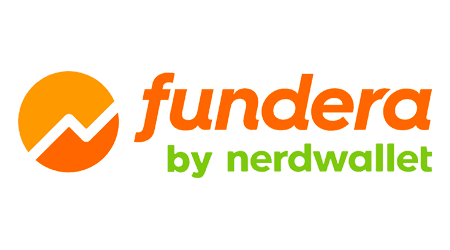
- No hard credit check to use
- Funding Advisor provides products tailored to your business
- Funding as fast as 1 business day
- Required time in business: 6+ months
- Required annual revenue: $60,000+
- Min credit score: 550+

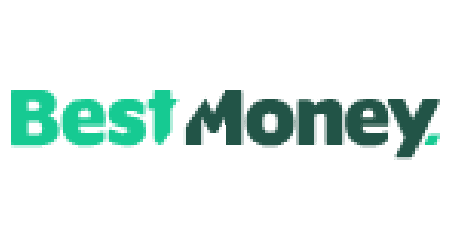
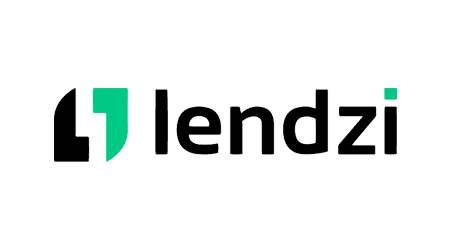
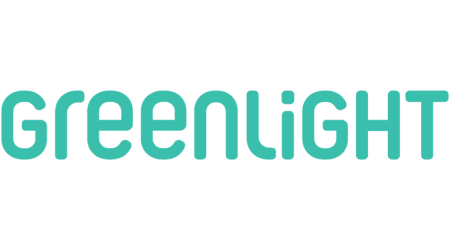
Greenlight
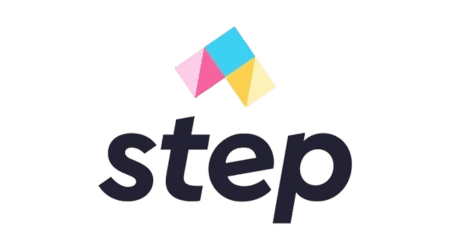
Step
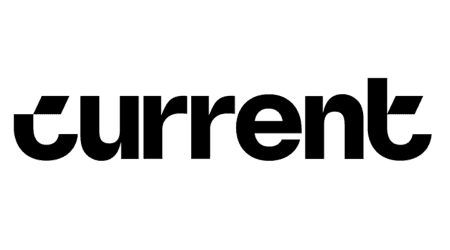
Current teen banking
We currently don't have that product, but here are others to consider:
How we picked theseThe Finder Score crunches 12+ types of business loans across 35+ lenders. It takes into account the product's interest rate, fees and features, as well as the type of loan eg investor, variable, fixed rate - this gives you a simple score out of 10.
To provide a Score, we compare like-for-like loans. So if you're comparing the best business loans for startups loans, you can see how each business loan stacks up against other business loans with the same borrower type, rate type and repayment type.

Upfunding is a small business lending company by Latinos for Latinos. Upfund understands the complexities of entrepreneurship in the face of language barriers and systemic obstacles. It specializes in industries such as transportation, construction, food services and more which many lenders may consider high risk. Borrowers can access loans up to $5,000, and may see funding in 24 business hours.
It offers a simple application and loan process and everything can be completed in Spanish. Plus, merchants can be funded with an ITIN only or Social Security number.
| Loan amount | $5,000 – $50,000 |
|---|---|
| APR | Varies by lender |
| Min. Credit Score | 580 |
| Loan amount | $5,000 – $50,000 |
|---|---|
| APR | Varies by lender |
| Min. Credit Score | 580 |
9.6 Excellent
| Loan amount | $1,000 – $5,000,000 |
|---|---|
| APR | Varies by lender |
| Min. Credit Score | 580 |
| Loan amount | $1,000 – $5,000,000 |
|---|---|
| APR | Varies by lender |
| Min. Credit Score | 580 |
7.4 Great
| Loan amount | $1,000 – $15,000 |
|---|---|
| APR | 0% |
| Loan amount | $1,000 – $15,000 |
|---|---|
| APR | 0% |
Your options for borrowing money for your business go beyond a traditional term loan to include lines of credit, merchant cash advances and other types of business loans. The business financing you choose should depend on your business and why you need the money.
A business loan is any type of financing that’s used to fund business expenses — from paying staff wages and purchasing inventory to expanding your business or improving cash flow to investing in marketing or covering unexpected emergencies.
Startups and entrepreneurs can look to traditional lenders like banks and credit unions as well as online lenders, crowdfunding sites and the Small Business Administration for business funding. Requirements, rates and terms depend on the lender and your business.
Your business typically needs to be at least six months old and bring in over $50,000 a year in revenue to qualify. Other factors like your personal credit score and relationship with the lender also play a role.
Depending on the type of financing, you can find unsecured options that don’t require collateral or secured loans backed by your business assets or the item you’re purchasing. Interest rates can be fixed or variable, with repayment terms lasting anywhere from six months to 25 years.
The debt service coverage ratio — more commonly called the DSCR — is an industry measure of the cash income a business has left over at month’s end that can be used to service its debt. It includes principal, interest and lease payments.
The DSCR is a main benchmark used to determine your ability to repay a loan. When you apply for a loan at a bank or credit union, the lender uses your DSCR to decide whether your business can manage its repayments. If your business isn’t generating the income it needs to pay its operating costs and make repayments, then a lender will likely pass on your application.
Calculate your DSCR by dividing your annual business operating income by your total annual debt service level — the amount of principal and interest you must repay in a given year. The total annual debt service level will include your current debt and the loan you’re applying for.
A lender may use a different figure when assessing your operating income. Some use the earnings metric called EBITDA — or earnings before interest, taxes, depreciation and amortization — while others add net operating income to depreciation and any other noncash charges.
As a result, the DSCR figure won’t be the same across lenders, which can make a direct comparison among them difficult. Some also express the DSCR as a percentage rather than as a ratio.
A closer look:
The type of loan you get and the lender you work with are the biggest factors that determine how much you can borrow with a business loan. And you might find easier approval with a business loan backed by a form of collateral — be it a car, a tractor or your business’s future sales. A secured loan is less risky for the lender, who can sell your collateral to soften the financial hit if your business defaults.
In a sole proprietor, a single person owns and runs an unincorporated business. While a sole proprietor can have employees, they are the only ones paying income tax on profits earned.
Because sole proprietors have little separation between business and personal finances, banks and other financial institutions often view them as risky investments. If a sole proprietor loses out on an important contract, gets sick or cannot continue their business for any reason, the lender has wasted money on a loan that will likely go unpaid.
This risk makes it difficult for sole proprietors to secure a business loan, but it’s not impossible. With the right documentation and a good business plan in place, there are lenders willing to offer loans to sole proprietors.
| Loan types | Typical amounts | How it works | Pros and cons |
|---|---|---|---|
SBA loan
| $5,000–$5 million | An SBA loan is backed by the government. Although these loans are harder to qualify for, they’re designed for small businesses with just a few employees and target borrowers who’ve had trouble getting a traditional loan elsewhere. |
|
Personal loan
| $2,000–$100,000 | A personal loan can be used for business expenses. The borrowing amounts are typically lower, and it’s harder to deduct the cost on your taxes. |
|
Invoice financing
| 80% of the invoice amount | Invoice financing gives you an advance on your unpaid invoices. Costs are typically a percentage of the invoiced amount, and you’re expected to pay the advance back quickly after your invoice is due. |
|
Line of credit
| $5,000–$1 million | A line of credit allows you to draw from your credit limit whenever you need, and you only pay interest on the money you borrow. |
|
Term loan | $2,000–$5 million | A term loan allows you to borrow a single lump sum and pay it back over time. |
|
Consider this scenario: Sarah is a self-employed landscaper who designs boutique gardens for wealthy homeowners and small businesses across Seattle. She employs a part-time assistant and hires landscapers on a project-by-project basis.
Recently, a large hotel chain contracted her to design and build a courtyard garden for a new property. While promising, this is a much bigger job than her usual projects, and she realizes she needs at least $60,000 to hire more laborers and rent equipment.
Sarah’s choice: A term loan
With a good idea of her costs and safety knowing her client is large and stable, Sarah opts for a term loan from a bank. Because her business has been in operation for years, she’s able to get a fixed repayment plan with a low interest rate of 9.25%.
Even if you’ve been in business for years, have excellent credit and are turning a profit, your business still might struggle to qualify for a loan if it’s part of a high-risk industry.
Lenders generally consider industries high risk if they are more likely to fail. For example, industries like alcohol and gambling might be considered high risk because they’re subject to regulations that frequently change. However, other industries like restaurant and retail might be seen as risky because revenue isn’t always guaranteed.
Examples of high-risk industries include:
If you own a high-risk industry and can’t get approval from traditional lenders, you can find other types of financing, though they tend to be expensive.
If you’re looking to expand your business through advertising, you can use a business loan to fund a marketing campaign in some cases. It helps to nail down your marketing strategy before you apply for financing.
Here are some common ways marketing loans can be used.
It may seem like every online lender offers the same thing, but that doesn’t make it true. Like any loan option, compare the features of the loan and the rules set by the lender to get the best online business loan that offers the most for your money. The brands listed below have some features in common, giving you a solid way to kick off the comparison process.
A no-credit-check business loan is a type of business financing where the lender doesn’t consider your credit score during the application process. It’s typically short-term financing and can cost more than other options.
Often, no-credit-check business loans don’t work like a typical unsecured term loan. Most require some kind of collateral or a personal guarantee. Others might consider different risk factors, like your clients’ credit scores.
It’s possible but not likely. Most startup-friendly loans tend to rely on the business owner’s credit to make up for the fact that your business doesn’t have a long record of revenue.
Unless you have enough money in a retirement plan to fund a new business with a ROBS, you might have difficulty finding a legitimate lender willing to forego a credit check completely. Here’s how startup funding works by credit score:
It depends on what you need to finance. Business loans are designed to cover a large one-time expense and you’ll have low-interest business loan options to choose from depending on youor credit, while credit cards are designed to cover smaller expenses that are hard to predict over a long period.
It also depends on your cash flow. If you have the cash flow to pay off your credit card balance each month, you won’t have to pay any interest.
Some credit cards come with a 0% APR promotional period, which can last as long as 12 months. If you pay off the balance before the period is up, you won’t have to pay interest.
| Compare business credit card if you … | Compare loans if you … |
|---|---|
|
|
Most small businesses can get a business loan by determining how much funding the business needs and comparing lenders. Qualifications generally include:
If you don’t meet qualifications, you may be able to find financing from an SBA loan provider or an alternative lender if bank loans aren’t an option. Alternative lenders include microlenders, online business loan providers and factoring companies. They might not offer competitive rates compared to a bank, but they can help your business get to a place where it’s eligible for a bank loan.
The turnaround time for a business loan largely depends on the lender you work with and the type of financing you’re interested in. It can take a bank or credit union one to two weeks to process a business loan application and disburse your funds.
Alternatively, online lenders may be able to offer you an instant approval decision and fund your loan within a few business days, while others may be able to offer loans with same-day funding. And with SBA loans, the entire process can take several months.
Before you start comparing lenders, calculate how much you need to borrow, assess the state of your business’s finances, check your personal credit report and choose the type of financing you need.
Once you have a better idea of what you need, look for lenders offering the loan amount and type of financing you need — with basic requirements that your business meets.
Then, compare the rates, fees, terms and turnaround time for each product. You might want to weigh other factors that are important to you, like no paperwork requirements or lower rates for repeat borrowers. If you’re applying online, you may also want to consider the steps lenders take to protect applicants’ information.
Using a lending marketplace like businessloans.com or Lendio may also offer a way for you to quickly compare multiple loan offers from top lenders with just one form.
Ever wonder what it takes to get a high-limit business loan? Find out which lenders go big.
Compare top lenders offering loans in Florida to trucking and transportation businesses and the requirements to qualify.
Calculate the monthly payments and total costs of your business loan. Plus, learn how to reduce the total cost.
Discover the essential steps and strategies for buying a business, from what business to buy to closing the deal.
Compare the best long-term business loans for 2024.
BHG Financial is a nonbank lender that offers investment, business debt consolidation, startup and healthcare-related loans to professionals. Borrow up to $500K with minimal requirements.
Though fast, it’s not up front about rates and fees.
Like BlueVine invoice factoring and credit lines? Check out these six alternatives.
Compare some of the top lenders offering business lines of credit and the pros and cons of each one.
Take advantage of this progressive form of flexible funding built for retailers.